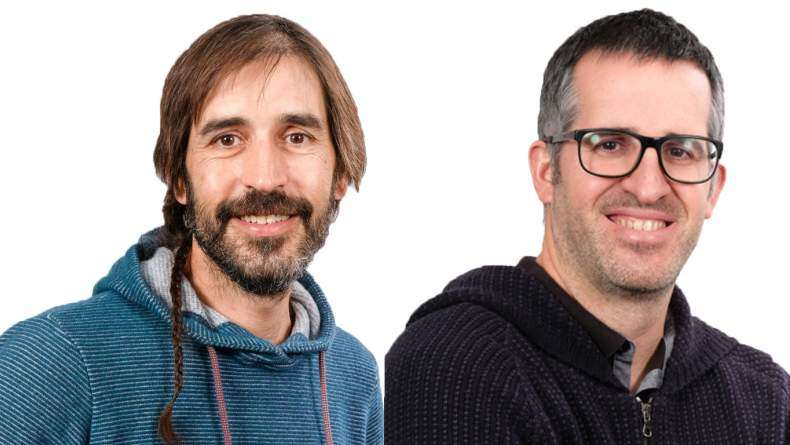BCMaterials & Master in New Materials invited talk: Dr. Catarina Lopes

Electroactive Polymer Composites for Smart Materials
 Materials able to respond to environmental stimulus with particular changes in some variables are arising many interest for integration in a range of technology applications. The development of electroactive polymer composites is crucial in this context due to the possibility to combine the electroactive properties of the polymer matrix with a large variety of fillers that allows tailoring responses for specific applications.
The best all-around electroactive polymers are poly(vinylidene fluoride) (PVDF) and its copolymers with the largest piezoelectric response, in addition to their biocompatibility and chemical stability in a large variety of environments. Allied with the properties of ceramics, metal nanoparticles, carbon nanotubes and magnetostrictive particles, for e.g., PVDF can lead to the production of a material with a higher dielectric constant, a higher electric conductivity or even the appearance of a magnetoelectric effect.
Furthermore, new fillers are currently being explored. Among them are aluminosilicates, traditionally used to increase the mechanical performance and thermal stability of polymers, and ionic liquids, widely promoted as “green solvents”. The high surface area, ion exchange capacity, different shape and size and the capacity of molecule encapsulation in the 3D structure presented by aluminosilicates and the chemical and thermal stability, low vapour pressure and high ionic conductivity properties of ionic liquids are attracting the attention in the composites field. The tailoring properties of both, fillers and matrix, allow their application in the areas of biomedicine, energy generation and storage, filtration, sensor and actuator.
Dr. Ana Catarina Lopes is graduated in Physics and Chemistry in 2006 and Master in Physics in 2009. In September 2013 she obtained her Physics PhD degree at the University of Minho, Braga, Portugal. Part of her thesis work was in collaboration with the University of Valencia, Spain and University of Münster, Germany, and dealt about electroactive polymeric composites with porous structured materials. She also performed one year Post-doc at the University of Minho, where she worked in the project of ionic electroactive polymers for high performance actuators applications. During this period, she also successfully supervised 5 final degree projects. She is author and co-author of 22 articles in indexed journals in the field of electroactive polymer composites, receiving about 230 citations (h-index=7).
Materials able to respond to environmental stimulus with particular changes in some variables are arising many interest for integration in a range of technology applications. The development of electroactive polymer composites is crucial in this context due to the possibility to combine the electroactive properties of the polymer matrix with a large variety of fillers that allows tailoring responses for specific applications.
The best all-around electroactive polymers are poly(vinylidene fluoride) (PVDF) and its copolymers with the largest piezoelectric response, in addition to their biocompatibility and chemical stability in a large variety of environments. Allied with the properties of ceramics, metal nanoparticles, carbon nanotubes and magnetostrictive particles, for e.g., PVDF can lead to the production of a material with a higher dielectric constant, a higher electric conductivity or even the appearance of a magnetoelectric effect.
Furthermore, new fillers are currently being explored. Among them are aluminosilicates, traditionally used to increase the mechanical performance and thermal stability of polymers, and ionic liquids, widely promoted as “green solvents”. The high surface area, ion exchange capacity, different shape and size and the capacity of molecule encapsulation in the 3D structure presented by aluminosilicates and the chemical and thermal stability, low vapour pressure and high ionic conductivity properties of ionic liquids are attracting the attention in the composites field. The tailoring properties of both, fillers and matrix, allow their application in the areas of biomedicine, energy generation and storage, filtration, sensor and actuator.
Dr. Ana Catarina Lopes is graduated in Physics and Chemistry in 2006 and Master in Physics in 2009. In September 2013 she obtained her Physics PhD degree at the University of Minho, Braga, Portugal. Part of her thesis work was in collaboration with the University of Valencia, Spain and University of Münster, Germany, and dealt about electroactive polymeric composites with porous structured materials. She also performed one year Post-doc at the University of Minho, where she worked in the project of ionic electroactive polymers for high performance actuators applications. During this period, she also successfully supervised 5 final degree projects. She is author and co-author of 22 articles in indexed journals in the field of electroactive polymer composites, receiving about 230 citations (h-index=7).
Dr. Catarina Lopes, Universidade do Minho, Braga, Portugal
 Materials able to respond to environmental stimulus with particular changes in some variables are arising many interest for integration in a range of technology applications. The development of electroactive polymer composites is crucial in this context due to the possibility to combine the electroactive properties of the polymer matrix with a large variety of fillers that allows tailoring responses for specific applications.
The best all-around electroactive polymers are poly(vinylidene fluoride) (PVDF) and its copolymers with the largest piezoelectric response, in addition to their biocompatibility and chemical stability in a large variety of environments. Allied with the properties of ceramics, metal nanoparticles, carbon nanotubes and magnetostrictive particles, for e.g., PVDF can lead to the production of a material with a higher dielectric constant, a higher electric conductivity or even the appearance of a magnetoelectric effect.
Furthermore, new fillers are currently being explored. Among them are aluminosilicates, traditionally used to increase the mechanical performance and thermal stability of polymers, and ionic liquids, widely promoted as “green solvents”. The high surface area, ion exchange capacity, different shape and size and the capacity of molecule encapsulation in the 3D structure presented by aluminosilicates and the chemical and thermal stability, low vapour pressure and high ionic conductivity properties of ionic liquids are attracting the attention in the composites field. The tailoring properties of both, fillers and matrix, allow their application in the areas of biomedicine, energy generation and storage, filtration, sensor and actuator.
Dr. Ana Catarina Lopes is graduated in Physics and Chemistry in 2006 and Master in Physics in 2009. In September 2013 she obtained her Physics PhD degree at the University of Minho, Braga, Portugal. Part of her thesis work was in collaboration with the University of Valencia, Spain and University of Münster, Germany, and dealt about electroactive polymeric composites with porous structured materials. She also performed one year Post-doc at the University of Minho, where she worked in the project of ionic electroactive polymers for high performance actuators applications. During this period, she also successfully supervised 5 final degree projects. She is author and co-author of 22 articles in indexed journals in the field of electroactive polymer composites, receiving about 230 citations (h-index=7).
Materials able to respond to environmental stimulus with particular changes in some variables are arising many interest for integration in a range of technology applications. The development of electroactive polymer composites is crucial in this context due to the possibility to combine the electroactive properties of the polymer matrix with a large variety of fillers that allows tailoring responses for specific applications.
The best all-around electroactive polymers are poly(vinylidene fluoride) (PVDF) and its copolymers with the largest piezoelectric response, in addition to their biocompatibility and chemical stability in a large variety of environments. Allied with the properties of ceramics, metal nanoparticles, carbon nanotubes and magnetostrictive particles, for e.g., PVDF can lead to the production of a material with a higher dielectric constant, a higher electric conductivity or even the appearance of a magnetoelectric effect.
Furthermore, new fillers are currently being explored. Among them are aluminosilicates, traditionally used to increase the mechanical performance and thermal stability of polymers, and ionic liquids, widely promoted as “green solvents”. The high surface area, ion exchange capacity, different shape and size and the capacity of molecule encapsulation in the 3D structure presented by aluminosilicates and the chemical and thermal stability, low vapour pressure and high ionic conductivity properties of ionic liquids are attracting the attention in the composites field. The tailoring properties of both, fillers and matrix, allow their application in the areas of biomedicine, energy generation and storage, filtration, sensor and actuator.
Dr. Ana Catarina Lopes is graduated in Physics and Chemistry in 2006 and Master in Physics in 2009. In September 2013 she obtained her Physics PhD degree at the University of Minho, Braga, Portugal. Part of her thesis work was in collaboration with the University of Valencia, Spain and University of Münster, Germany, and dealt about electroactive polymeric composites with porous structured materials. She also performed one year Post-doc at the University of Minho, where she worked in the project of ionic electroactive polymers for high performance actuators applications. During this period, she also successfully supervised 5 final degree projects. She is author and co-author of 22 articles in indexed journals in the field of electroactive polymer composites, receiving about 230 citations (h-index=7).Related news
María Calles, New Doctor of BCMaterials
We would like to congratulate María Calles García for obtaining her PhDs in Materials Science and Technology from the UPV/EHU. On December 4 made a brilliant defense of her thesis titled ‘Chelating…Invited Talk with Barcelona Microelectronics Institute’s researchers (December 3)
On December 3 at 12:00 PM, in the Martina Casiano Auditorium in Leioa, BCMaterials will host senior researchers Antón Guimerà and Xavier Illa from the Barcelona Microelectronics Institute (IMB-CNM,…Invited Talk by Liu Yao on Lithium-Metal Batteries (December 2)
Next Monday, December 2, Liu Yao, professor at the Shanghai Institute of Applied Physics, will give an invited lecture at BCMaterials entitled ‘Li-Metal Batteries: From Liquid to Solid-State’. The…Success of BCMaterials’ Annual Workshop on Critical Materials
The 2025 edition of BCMaterials’ annual workshop gathered nearly one hundred participants on November 19 in Leioa to review the latest advances and discuss critical materials, their applications, and…



